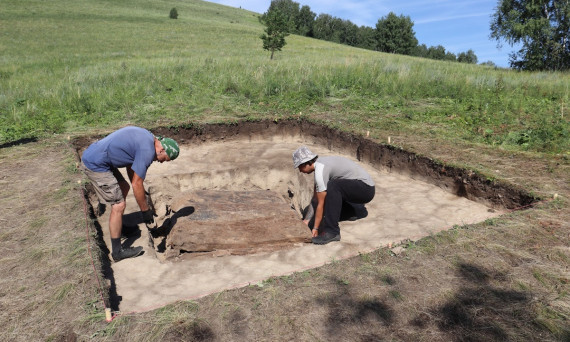Researchers from the European University at St. Petersburg, the Institute of the History of Material Culture of the Russian Academy of Sciences and the State Hermitage Museum conducted the first series of experiments on DNA isolation from historical samples in the clean rooms of the paleogenomics laboratory located at the Solopharm pharmaceutical plant.
As part of a pilot study, a technique was refined for isolating ancient DNA from biological samples. The technique was originally proposed and published by Ludovic Orlando and colleagues at the University of Toulouse, France.
As test materials, the researchers used organic material found on the territory of the Republic of Khakassia in July and August 2023 during excavations of a Oglakhta burial site from the 2nd-3rd centuries CE. Samples of leather clothing and shoes of the so-called funerary doll from the grave –a full-size imitation of a human body with cremated bones—as well as grass from the stuffing of the "doll" were taken for DNA isolation. The two-day round of work resulted in the extraction of genetic material from all six samples. The next step will be the preparation of genomic libraries of the DNA fragments for subsequent DNA sequencing and determination of the animal species of the leather samples found in the grave.
"This information will provide insight into the natural environment of the population of southern Siberia in the early modern era and show what wild and domestic animals were used for sewing clothes and funerary objects,"
said Svetlana Pankova, a senior researcher at the Department of Archaeology of Eastern Europe and Siberia at the State Hermitage Museum and a researcher at the European University.
The study of ancient animal and plant DNA from the Oglakhti burial ground is only the first stage of genetic research by the European University's paleogenomics laboratory. Further comparative analysis of the genetic material of ancient people buried there is planned.
This work stems from a quadripartite cooperation agreement signed on June 8, 2022 by the State Hermitage, the European University in St. Petersburg, the pharmaceutical company Solopharm (Grotex) and the medical and genetic center Genotek.
Solopharm, a leading Russian pharmaceutical company has invested in, built and equipped two laboratories for paleogenetic research. One of them is located on the territory of the European University at St. Petersburg, and the second one is located at Solopharm's pharmaceutical plant.
Photo: Еxcavations of a Oglakhta burial site during the summer of 2023
